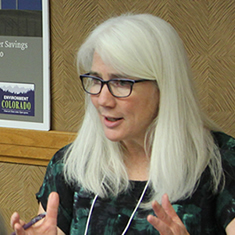
10 tips for appreciating nature in your neighborhood
Taking a socially-distanced walk around your neighborhood is a great way to get out of the house, stretch your legs, and see some of the wonder of the natural world in your own backyard. Here is a list of 10 ways to appreciate nature on a walk around your neighborhood.
As many people across the country are spending more time at home and in their neighborhoods due to stay-at-home orders and the closure of cherished outdoor spaces, it’s a great time to develop a deeper appreciation for all of the nature close to home. Taking a socially-distanced walk around your neighborhood is a great way to get out of the house, stretch your legs, and see some of the wonder of the natural world in your own backyard. Here is a list of 10 ways to appreciate nature on a walk around your neighborhood.
-
Identify a plant you don’t know
Find a cool-looking (or boring-looking!) plant on your neighborhood walk that you can’t identify, and try and figure out what it is. This website has a question-by-question approach to narrow down and identify your mystery plant, and PlantSnap and PlantNet have apps that are intended to help identify plants and flowers via photograph.
-
Listen for bird calls
A telltale sign of the advent of spring is birds chirping. On your walk, see how many distinct types of bird you can distinguish by their calls, and how many of those you can particularly identify. If you have a bird call stuck in your head and you have to know who it’s from, check out Audubon’s field guide for recordings of calls from North American birds. If you’re really hooked, you can follow Audubon’s 8-part guide to birding by ear.
-
Draw a tree that you find
Pick out your favorite tree on your walk and draw it! Pen, coloring pencil, watercolors, crayon, whatever works best for you. Bonus points for drawing a tree so well that someone else not on the walk with you can identify it.
-
Find evidence of an animal’s home
Animals in urban areas have homes too! See if you can spot a squirrel or bird’s nest, a rodent’s burrow, a beehive, an anthill, or other animal domicile. Half credit for human-made animal homes like bee hotels or birdhouses (unless you made said home, in which case full credit).
-
Collect leaves for a leaf rubbing
If you spot a leaf on the ground or a broken-off branch with some pine needles on it, consider bringing it home to make a leaf rubbing image. Leaf rubbing is easy, quick, and requires only a leaf, two pieces of white paper, and a crayon or colored pencil. Leaf rubbing works great with large, flat leaves like those found in the Northeast, but you can try it with any leaf of any kind you find in your neighborhood. Be sure not to take leaves off of any living plants!
-
Photo of a flower
This one is pretty simple: take a photo of the prettiest or most interesting flower you can find on your walk.
-
Find a plant with berries or fruit
The advent of spring (and summer) brings out berries in many plants, trying to distribute their seeds far and wide. If you keep a close eye out, you may be able to find a plant with berries or fruit already out. Rhubarb and strawberry are two plants that tend to generate their bounty earlier on, but there’s a huge variety of fruits and berries out there to observe.
-
Find evidence of an animal: tracks, scat
While on your walk, try and find evidence of an animal you didn’t actually see. This might be a set of tracks in the sand or scat on the ground, or maybe some flattened grass or broken branches if you’re truly an expert tracker.
-
Identify a bird you don’t know
Some birds are easier identified by their distinctive calls and songs, but many others can be distinguished by sight. Audubon’s field guide is a great resource for visually identifying specific bird species, and a simple set of observations about the birds you see (shape, size, habitat, behavior etc) can go a long way towards narrowing down which group and species your mystery avian friends belong to.
-
Bud that has not blossomed
One of the best parts about having consistent time outdoors in your neighborhood throughout the spring is the chance to observe changes in nature in your own backyard. On your walk, keep an eye out for a plant bud that has not blossomed into a flower, and keep track of how much time passes before it does.
Share photos and stories from your neighborhood walks with us on social media! Tag us on twitter @EnvAm, Facebook at Environment America or Instagram @EnviroAm, or use the hashtags #NatureInTheNeighborhood and #GreenerTogether.
Authors
Wendy Wendlandt
President & Chairwoman Environment America Research and Policy Center; Senior Vice President, the Public Interest Network
As president of Environment America Research and Policy Center, Wendy is a leading voice for the environment in the United States. She has been quoted in major national, state and local news outlets for nearly 40 years on issues ranging from air pollution to green investing. She is also a senior vice president with The Public Interest Network. She is a founding board member of Green Corps, the field school for environmental organizers, and Green Century Funds, the nation’s first family of fossil fuel free mutual funds. Wendy started with WashPIRG, where she led campaigns to create Washington state’s model toxic waste cleanup program and to stop the nation’s first high-level nuclear waste dump site. She is a 1983 graduate of Whitman College. She lives in Los Angeles with her husband and dog and hikes wherever and whenever she can.

